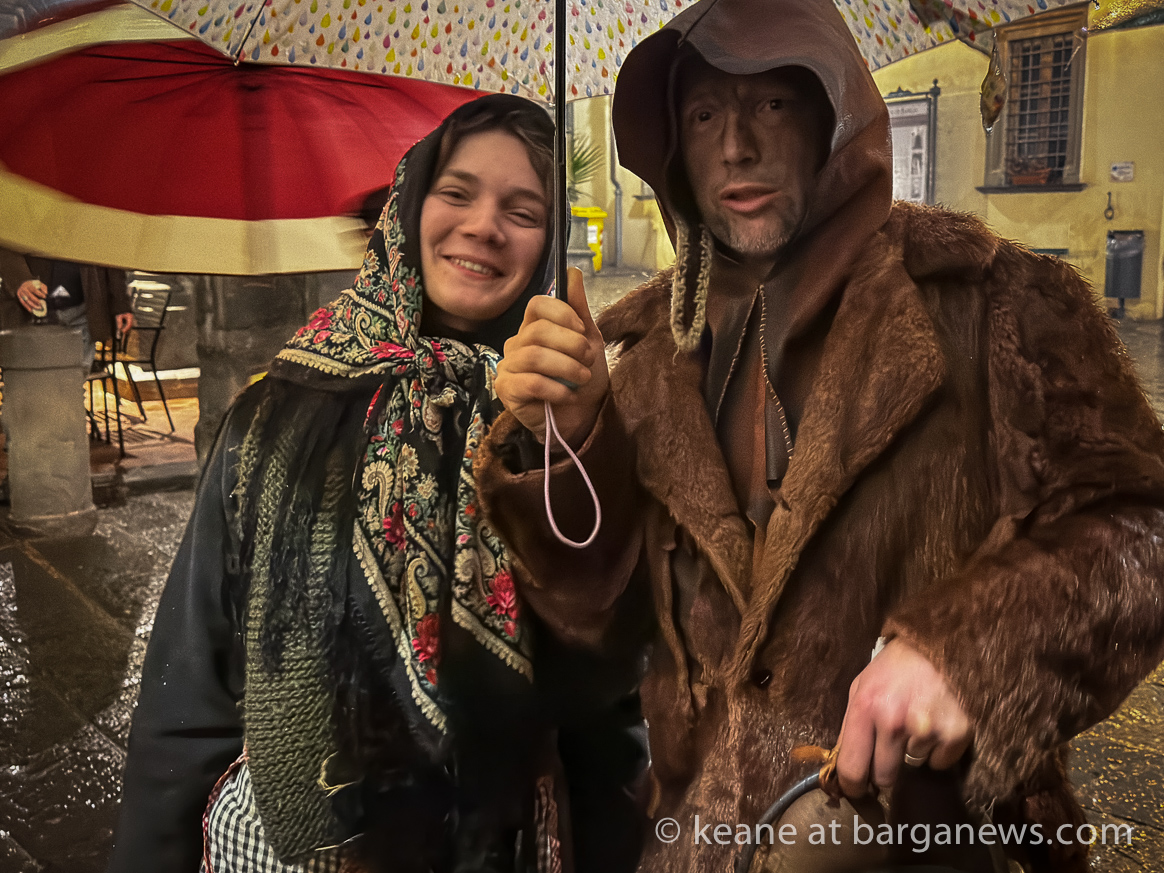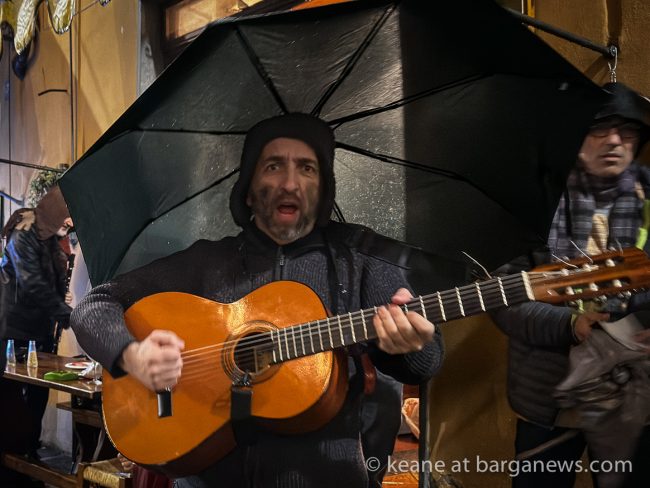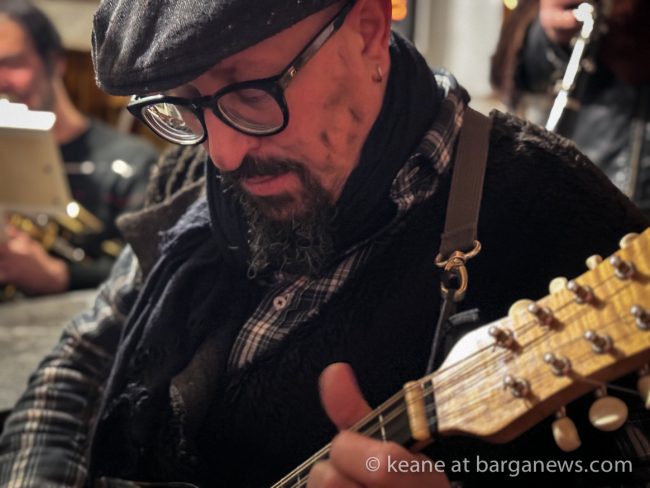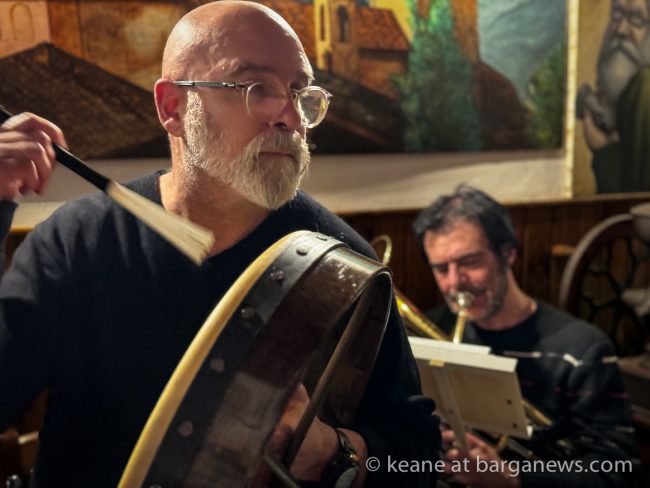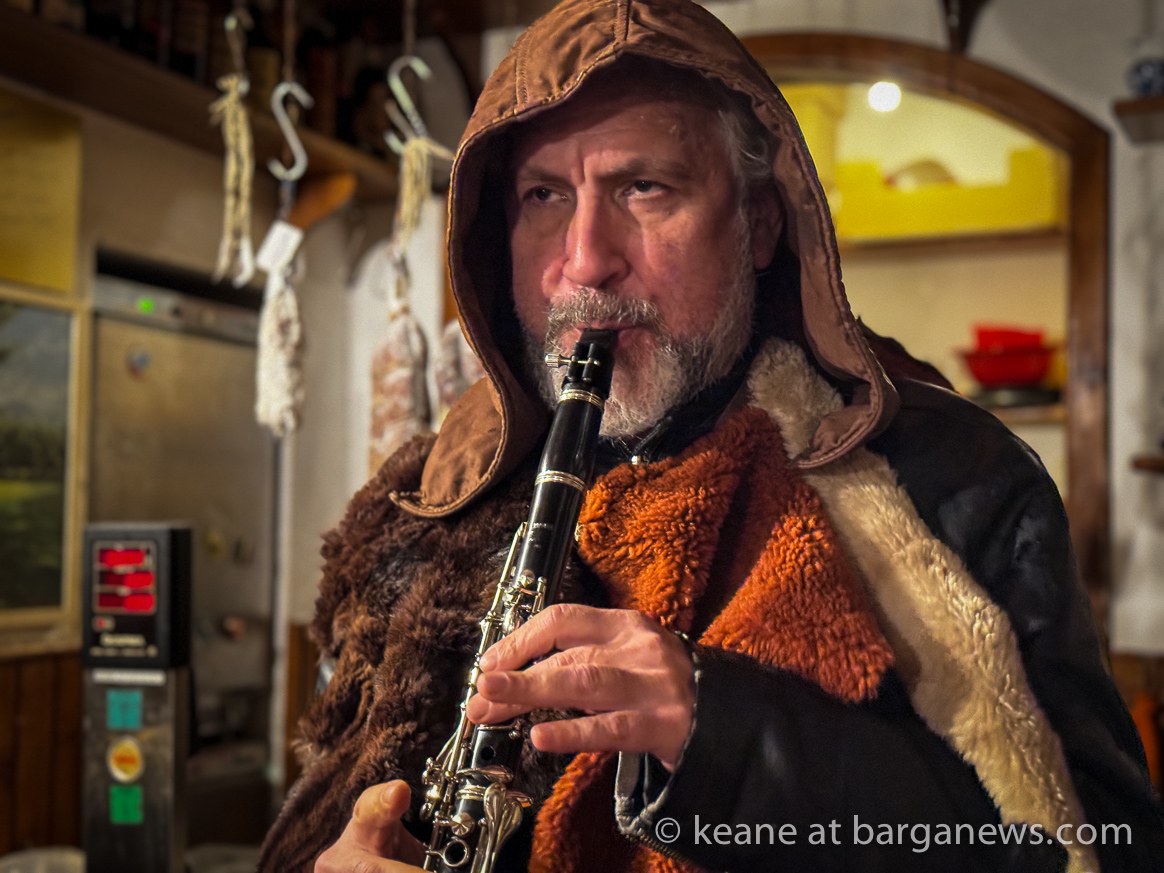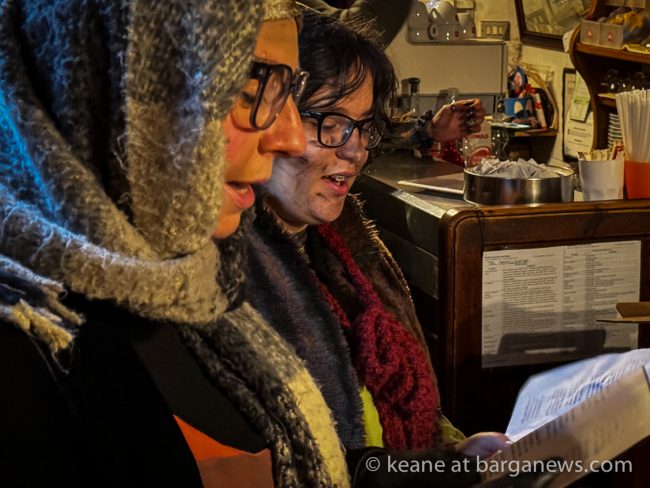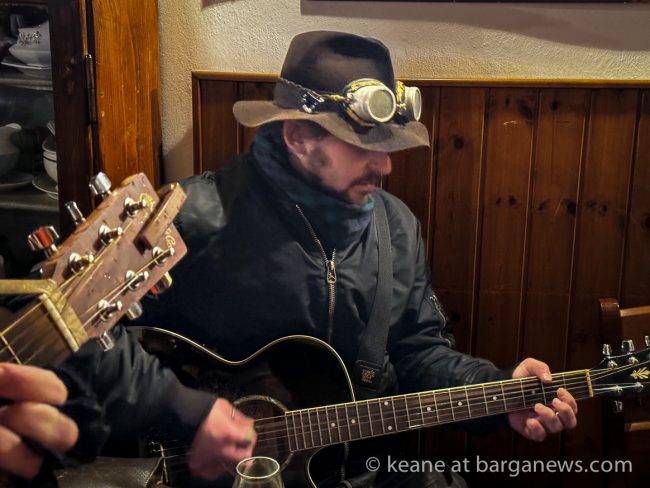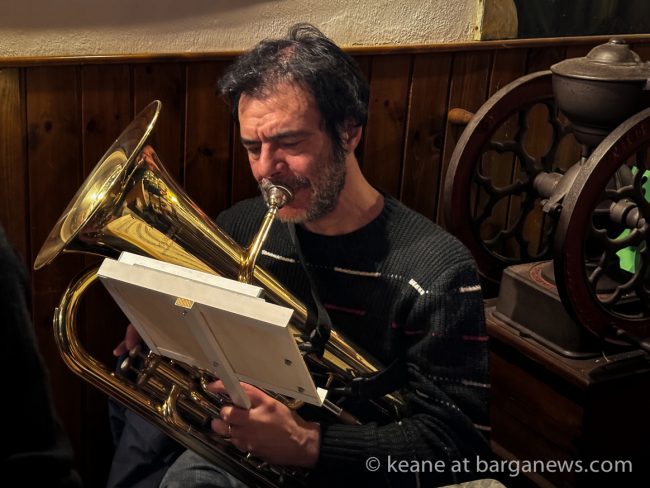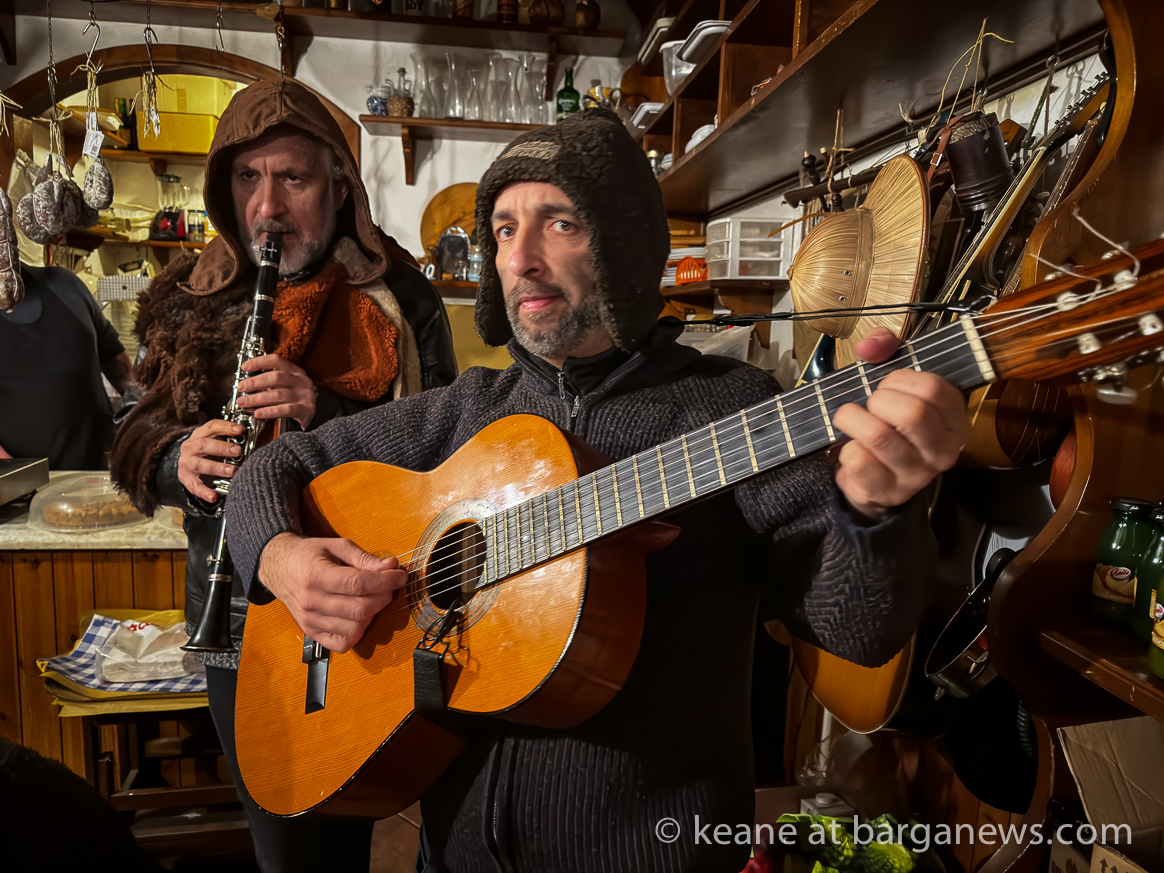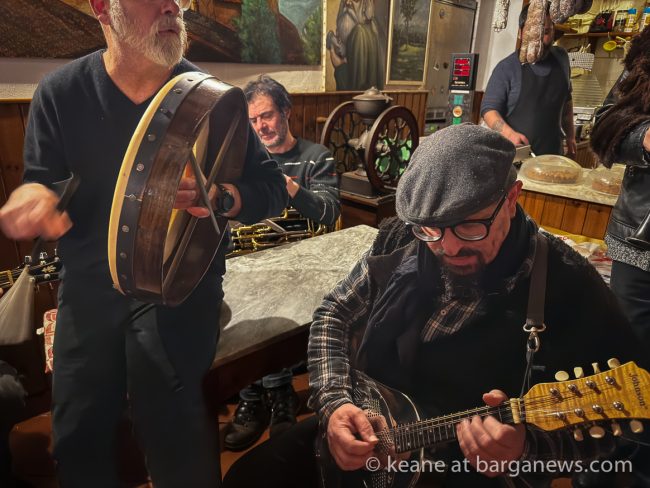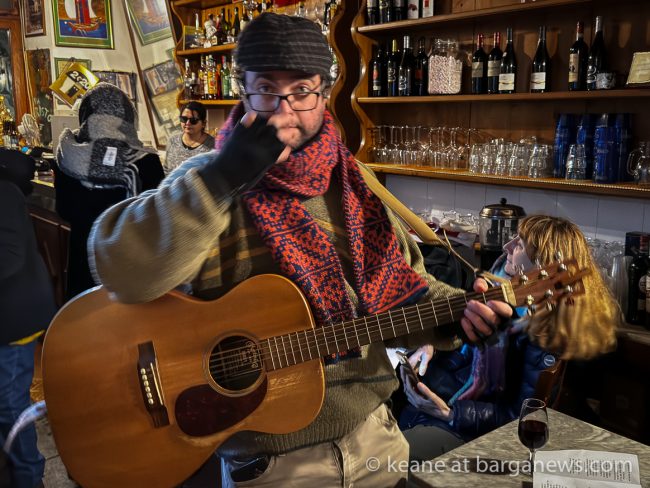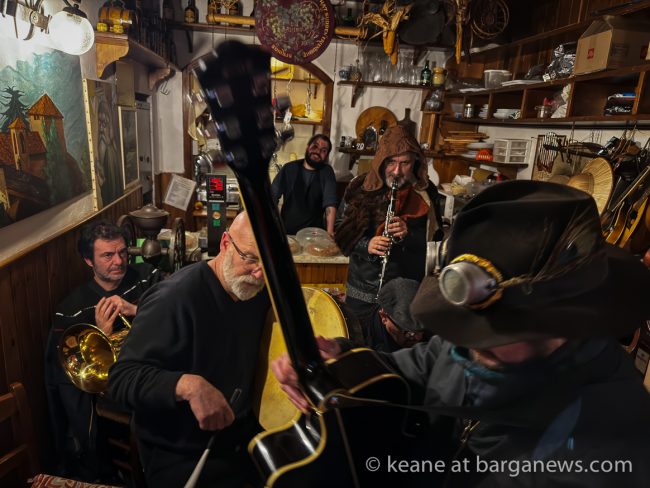Befanotti
All eyes were on the weather forecast for the evening when the Befanotti come down from the mountains for their traditional meeting and singing in Barga Vecchia …. did it happen?
Normally they would be entering houses, giving out presents to excited children and also frequenting the bars and restaurants singing the traditional Befana song and as tradition commands, being paid for their services by being offered glasses of hot punch.
As the evening wore on the cumulative effects of all those hot punches would became more and more apparent and the singing of the Befanotti, like their clothes, would became by stages more and more ragged.
Despite the horrible wet weather one of the groups who were in Barga Vecchia this evening included many of the musicians from Barga Jazz who not only sang and played the traditional Befana song but also with variations … a jazz version was heard, a Giovanni Pascoli version and even at one point, far into the evening, the residents of Barga Vecchia were treated to a Ska version of the song.
 |
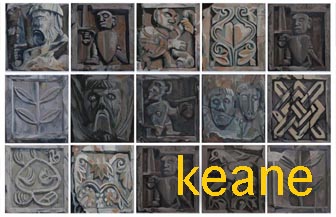 |
 |
 |
La Befana
The Feast of the Epiphany, celebrated January 6 with a national holiday in Italy, and the tradition of La Befana are a big part of Italian Christmas celebrations. Epiphany commemorates the 12th day of Christmas when the three Wise Men arrived at the manger bearing gifts for Baby Jesus. The traditional Christmas holiday season in Italy lasts through Epiphany.
Italy’s traditional celebration includes the tale of a witch known as La Befana who arrives on her broomstick during the night of January 5 and fills the stockings with toys and sweets for the good children and lumps of coal for the bad ones.
According to the legend, the night before the Wise Men arrived at the manger they stopped at the shack of an old woman to ask directions. They invited her to come along but she replied that she was too busy. Then a shepherd asked her to join him but again she refused. Later that night, she saw a great light in the sky and decided to join the Wise Men and the shepherd bearing gifts that had belonged to her child who had died. She got lost and never found the manger.
Now La Befana flies around on her broomstick each year on the 11th night, bringing gifts to children in hopes that she might find the Baby Jesus. Children hang their stockings on the evening of January 5 awaiting the visit of La Befana.
The origins of La Befana may actually go back farther, to the Roman’s pagan festival of Saturnalia, a one or two week festival starting just before the winter solstice. At the end of Saturnalia, Romans would go to the Temple of Juno on the Capitoline Hill to have their augers read by an old crone. Many pagan traditions were incorporated into Christmas celebrations when Christianity became main stream. La Befana was a good substitute for the old woman who read the augers. The saying augur originated with this practice, too, as it was common to wish someone good augers. – sourcebefana
Barga Befana archives
Befana 2000 | 2001 | 2003 | 2004 | 2007 | 2008 | 2009 | 2010 | 2014 | 2015 | 2016 | 2017 | 2019 | 2023 |



